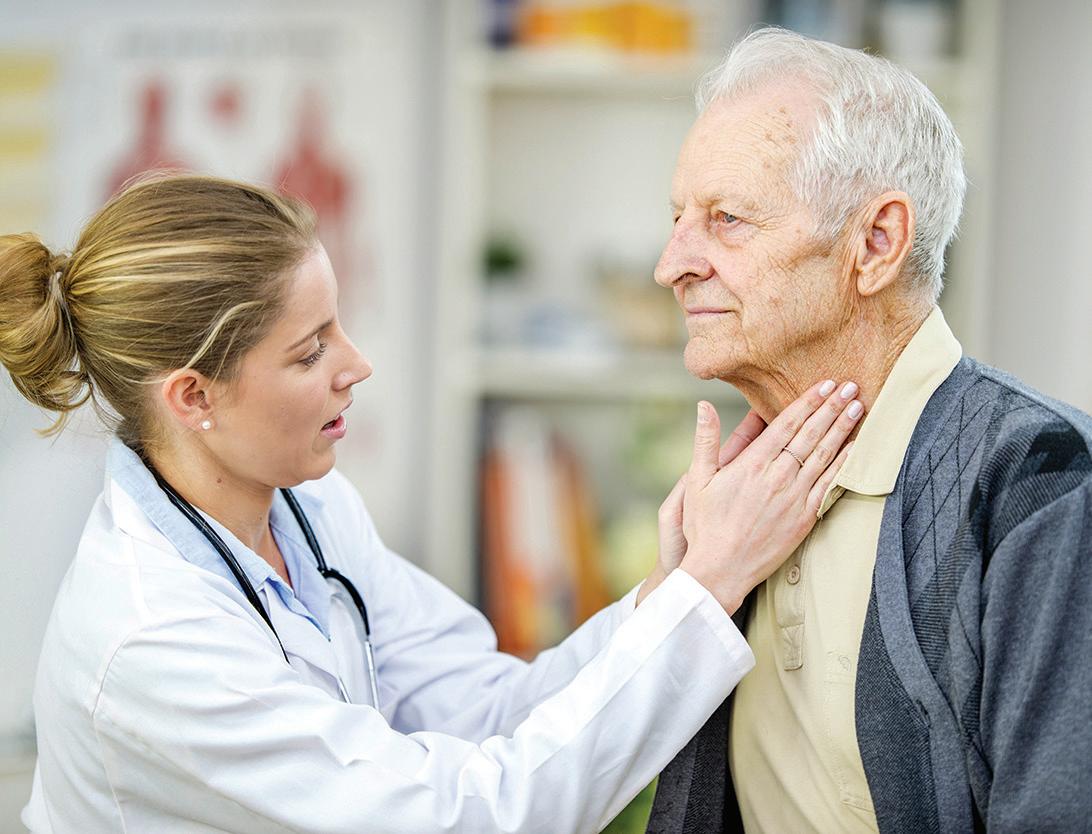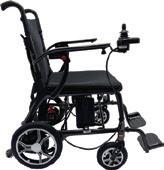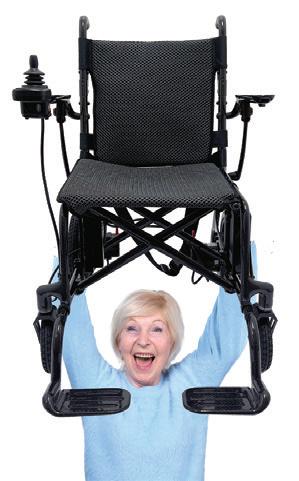Cancer Awareness & Prevention





(Metro Creative) - The thyroid is a butterfly-shaped gland that wraps around the trachea. Among its many responsibilities, the thyroid produces hormones that help regulate metabolism, blood pressure and heart rate, says the Mayo Clinic. The thyroid also regulates body temperature and how much calcium is in the blood.
An ill-functioning thyroid can set off a chain reaction in the body. Individuals who have issues with their thyroid often have to take supplemental hormones to regulate metabolic processes. In some instances, thyroid cancer may be to blame for symptoms people are experiencing. The Cleveland Clinic says close to 53,000 Americans receive a thyroid cancer diagnosis every year, while the Canadian Cancer Society says about 6,3000 Canadians will be diagnosed with thyroid cancer in a given year.

In its early stages, thyroid cancer may not cause signs or symptoms and may only be detected during a neck examination or imaging scan for another health issue. The American Cancer Society says women are three times more likely than men to be diagnosed with thyroid cancer. People age 25 and 65 as well as those exposed to radiation
in the head or neck area are at the greatest risk of developing thyroid cancer.
While thyroid cancer may not be evident until it has progressed, certain symptoms may indicate its presence.
• Swollen lump on neck: City of Hope Cancer Care says the most common early sign of thyroid
cancer is an unusual lump, swelling or nodule in the neck. Most nodules are benign, but it’s important to have things checked out.
• Pain: Pain may start in the front of the neck and extend to the ears.
• Cough: Sometimes thyroid cancer may cause irritation to the throat, resulting in a cough that won’t subside.
• Hoarseness: The Cleveland Clinic says a loss of voice can occur with thyroid cancer, or the voice may change and become more scratchy.
• Swollen lymph nodes: Swollen lymph nodes in the neck may be indicative of thyroid cancer.
• Shirts seem tight: Women or men who wear close-fitting collared shirts may feel that the collars are becoming too tight.
• Trouble breathing or swallowing: Difficulty breathing or swallowing may indicate a thyroid issue, including cancer of the thyroid.
If a person has any of these signs or symptoms, he or she should speak with a doctor right away. These symptoms also can be caused by non-cancerous conditions. Even if thyroid cancer is present, most cases can be successfully treated.
(Metro Creative Connection) - Anyone aspiring to lose weight is likely aware that there are no shortage of approaches promising to bust belly fat and slim waistlines. Weight loss fads come and go, but daily physical activity remains a reliable and effective approach to shedding extra pounds.
The Centers for Disease Control and Prevention notes that physical activity provides both short- and long-term benefits. Among the more long-term benefits of regular exercise is the link between physical activity and how it facilitates an individual’s ability to maintain a healthy weight. Though people may experience some notable initial weight loss after they begin a fitness regimen, they also can maintain that weight loss if they remain committed to exercise over the long haul.
The CDC notes that more physical activity increases the number of calories a body uses for energy. If individuals looking to turn over a healthier leaf couple a commitment to exercise with a healthier diet that includes consuming fewer calories, they can create a calorie deficit that ultimately contributes to weight loss.

The link between exercise and long-term weight loss is worth noting, as the CDC notes that research has found the only way to maintain
weight loss is to remain engaged in regular physical activity. Individuals attempting to lose weight for a particular reason, such as an upcoming wedding or a vacation, should know that exercise and a healthy diet can help them accomplish that goal. However, it’s highly likely they will regain that weight if they do not continue to exercise
after reaching their target weight loss goal. If the thought of regaining lost pounds is not enough to compel people to maintain their commitment to exercise, and honor all the hard work and determination required to lose the weight, perhaps a rundown of health risks associated with being overweight or obese might provide the motivation necessary to stay the course. According to the National Institute of Diabetes and Digestive and Kidney Diseases, being overweight or obese increases a person’s risk for a host of diseases and conditions, including:
• Type 2 diabetes
• Hypertension (high blood pressure)
• Heart disease
• Stroke
• Metabolic syndrome
• Fatty liver diseases
• Certain types of cancer, including cancers of the breast, liver, kidney, pancreas, and ovaries, among others
• Gout
• Fertility problems
• Sexual function problems
• Mental health problems
Routine physical activity is a great way to help people shed extra pounds so they can reach and maintain a healthy weight.

(Metro Creative) - Cancer affects people from all walks of life. According to the World Cancer Research Fund International, there were an estimated 18.1 million cancer cases around the world in 2020, and the breakdown was almost even among men (9.3 million) and women (8.8 million).
Great strides have been made in cancer research in the twenty-first century, and that has led to countless lives being saved. Cancer prevention strategies are another potentially lifesaving tool in the fight against the disease. A significant percentage of cancer deaths could be prevented. In fact, the Prevent Cancer® Foundation reports that research indicates about 50 percent of cancer deaths are preventable with the knowledge individuals have today.
Perhaps the most comforting aspect of cancer prevention is that many of the strategies that can reduce instances of the disease are simple. That means individuals won’t have to go to great lengths to include these strategies in their approach to cancer prevention.
• Avoid tobacco. The link between tobacco use and cancer has been known for a long time, and the good news is the message touting the importance of avoiding tobacco is working. The American Cancer Society reports that cigarette smoking rates had reached historic lows in 2019. While that’s great news, it might not tell the whole story, as consumers now have many other ways to use tobacco, each of which have been linked to cancer. So it’s not simply avoiding cigarettes, but also cigars, hookahs, chewing tobacco, vaping products, and more, that is necessary to reduce cancer risk.
• Shield your skin from the sun. The PCF notes that exposure to the sun’s ultraviolet rays causes the most skin cancers. The WCRFI reports that melanoma of the skin is the thirteenth most common cancer in men and the fifteenth most common cancer in women across the globe. Protecting the skin from the sun is as simple as applying a sunscreen with a minium sun protection factor (SPF) of 30 and covering up when spending long periods of time in the sun. The PCF urges individuals to avoid tanning beds and protect their skin year-round, including in winter.
• Utilize fruits and vegetables in your fight against cancer. The popularity of plant-based diets is on the rise. In fact, retail sales of plantbased foods in the United States increased by 11 percent in a single year between 2018 and 2019, according to data from the Plant Based Foods Association. A greater reliance on plant-based diets could go a long way toward reducing cancer deaths, as the PCF notes a 2021 study found that three servings of vegetables and two servings of fruit each day reduced the risk of cancer death by 10 percent.
• Avoid excessive alcohol consumption. The PCF notes that alcohol has been linked to cancers of the breast, liver, esophagus, and colon. When consuming alcohol, women are urged to limit their consumption to one drink or fewer each day, while men should limit their consumption to two or fewer alcoholic beverages per day. The science is simple: the more alcohol a person drinks, the greater his or her risk for cancer.
Cancer prevention is a vital component of a healthy lifestyle, and there are many simply ways people can cut their cancer risk.
(Metro Creative) - The phrase “get some sun” is heard far and wide between the months of May and September. Many people spend much of their weekends outdoors between Memorial Day and Labor Day, and that means exposure to the sun. As the mercury rises and more and more people emerge from their winter and early spring hibernation, a rundown of the link between sun exposure and skin cancer can remind readers of the need to exercise caution when heading outdoors in the months to come.
Exposure to the sun is a risk factor for skin cancer. According to the American Institute for Cancer Research (AICR), exposure to ultraviolet radiation is the primary cause of skin cancer. Ultraviolet radiation comes from natural sources, like the sun, but also from artificial sources like tanning beds. The AIM at Melanoma Foundation notes that exposure to the ultraviolet radiation is the main risk factor for melanoma, which the Melanoma Research Alliance notes is the deadliest form of skin cancer.
Does past exposure affect my risk today? at Melanoma notes that cumulative sun exposure and episodes of severe sunburns increase the risk of developing melanoma. According to the Skin Cancer Foundation, research has shown that the UV rays that damage skin also can alter a tumor-suppressing gene, giving cells less of a chance to repair before a progression to cancer takes place.

A single blistering sunburn in childhood or adolescence more than doubles a person’s risk of developing melanoma later in life, while five or more sunburns more than doubles that risk as well. The damage to skin caused by a sunburn is indeed cumulative, so the more sunburns a person gets, the greater that person’s risk of developing skin cancer becomes.
So is a tan detrimental to overall health?
AIM at Melanoma notes that the tan many people hope to get and keep throughout late spring and summer is detrimental to their overall
(Metro Creative) - Fun in the sun is part of what makes the great outdoors so enjoyable. Though everyone can safely enjoy such recreation, it’s important that people exercise caution when spending ample time in the sun. A lack of caution when soaking up some sun can increase individuals’ risk for skin cancer, including melanoma.
The Melanoma Research Alliance notes that melanoma is the deadliest form of skin cancer. Melanoma affects pigment-producing cells called melanocytes, which give the skin its color. The MRA notes that melanomas can develop in various parts of the body, but most originate on sun-exposed skin.
Melanoma is unique among skin cancers in more ways than one. Among the more unique characteristics of melanoma is that rates of the disease are rising rapidly, and the MRA notes that’s especially so among younger individuals. Though anyone can develop melanoma, higher rates of the disease among younger individuals underscores the need for greater education on how to protect the skin when spending time in the sun. The MRA also notes that melanoma can spread widely to other parts of the body, which is not typical of other skin cancers.
Melanoma is unique among skin cancers, but it
you’re
health. AIM notes that a tan develops when the skin tries to protect itself from UV rays by producing pigment as a protective shield. The more pigment the body produces, the darker the skin becomes. So a tan is evidence that the skin has been damaged by exposure to UV radiation. In fact, AIM notes that each time a person develops a tan, that individual’s risk of developing skin cancer increases.
Spring and summer weather beckons people outside each day. When that call comes, individuals must make an effort to protect their skin from overexposure to the sun.

produces some common signs. The MRA urges individuals to learn the ABCDEs of melanoma, which is a simple system of characterizing symptoms that can help people recognize what to look for if they are concerned about the disease.
• A (Asymmetrical): Moles or growths that are
asymmetrical or uneven may be indicative of melanoma and should be discussed with a physician immediately.
• B (Border): Moles or growths indicative of melanoma will have an irregular border.
• C (Color): Moles or growths resulting from melanoma exhibit changes in color.
• D (Diameter): A mole or growth that develops because of melanoma may have a diameter larger than the size of a pencil eraser.
• E (Evolved): Moles or growths resulting from melanoma evolve in size or thickness.
Many people, adults and children alike, are familiar with the Hans Christian Andersen fairy tale “The Ugly Duckling.” That beloved story is one to remember when thinking of melanoma. According to the MRA, a mole that does not look like the rest of the moles on an individual’s body could be indicative of melanoma.
Melanoma is potentially deadly and rates of the disease are on the rise. The presence of any the aforementioned signs should be brought to the attention of a health care professional. More information about melanoma can be found at curemelanoma.org.

(Metro Creative) - It may seem like adolescence is the time in a woman’s life when most of the biological changes she will experience take place. After all, puberty brings with it hormone fluctuations that can affect both physical and emotional health in various ways. However, as a woman enters mid-life and beyond, she may notice that she has to reevaluate her lifestyle to accommodate the evolution of her body and health.
Preventive health screenings and additional strategies can keep women fit and well as they reach age 40 and beyond.
Most doctors now recommend that women get annual mammograms starting at age 40. Mammograms can detect breast cancer early on at its most treatable stage. Manual breast exams conducted at home and by a doctor also can be vital tools.
Colorectal cancer screenings
A colonoscopy is recommended for all women between the ages of 45 and 50 (on the earlier side of that spectrum for African American women). This test can reveal the presence of polyps and cancerous growths.
Vision
Annual eye exams should be a part of every-
one’s vision care strategy. The American Optometric Association says that, between ages 41 and 60, people may notice differences in their vision. Some changes may happen more frequently, requiring new prescription eyeglasses. Therefore, it helps to visit an eye care professional to take corrective steps. It’s also important to note that, as one ages, the vitreous (clear jelly) in the eye can thicken, leading to increased floaters and flashes that should be checked by an ophthalmologist, as they may lead to retinal tears or detachment that can threaten vision.
Heart disease is the leading cause of death among women, says the Centers for Disease Control and Prevention. Cholesterol screening and other cardiovascular screenings can detect the presence of heart disease or indicate a person’s risk for it. Annual physical exams likely will include cholesterol checks as well as tests investigating other lipids in the blood.
Vitamin D check
Deficiency in vitamin D is a recognized pandemic. People are not naturally producing enough vitamin D from sun exposure, nor absorbing enough from the foods they eat. Vitamin D deficiency can be a serious concern in adult women, particularly those above the age of 40. Vitamin D deficiency can adversely affect mood,
and an article published in 2018 in the Journal of Family Medicine and Primary Care found vitamin D determines the pattern of post-menopausal bone loss and age-related osteoporosis. Verywell Health also says vitamin D is an important nutrient for preventing diabetes, cancer and age-related weight gain.
The American College of Obstetrics and Gynecologists say that it is important to visit a gynecologist annually for a woman’s health checkup. New guidelines emerged some time ago that indicate it is not necessary to get a Pap test at each visit. The recent guidance indicates women between the ages of 30 and 65 can opt for both a Pap and HPV test every five years; have a Pap test alone every three years; or only get the HPV test every five years. After age 65, cervical cancer screenings can cease if there has never been an indication suggesting the presence of abnormal cervical cells.
Moving into middle age brings about changes. Women should evolve health care plans accordingly to stay as healthy as possible.
(Metro Creative) - The digital age has dominated twenty-first century life and transformed how people live. Access to information pertaining to just about any topic is now never more than a quick smartphone search away. That’s made information more readily available, but it’s also led some to believe there’s simply too much data to process at times.
It’s undeniable that many things are now around to compete for individuals’ attention, and it’s no small task to determine what does and doesn’t merit consideration. Health-conscious adults recognize the importance of staying on top of health-related issues, and that may involve educating oneself about certain diseases with the hope of understanding and reducing individual risk.

For men, recognition of some important facts about prostate cancer can help them better understand a disease that the World Cancer Research Fund International reports is the second most commonly occurring cancer in men.
• The Prostate Cancer Foundation and the Canadian Cancer Foundation report that one in eight men in the United States and Canada will be diagnosed with prostate cancer in his lifetime.
• Men are more likely to develop prostate cancer than they are melanoma and cancers of the
colon, kidney and stomach combined.
• The PCF estimates that more than three million men in the U.S. are currently living with prostate cancer.
• The CCS estimates that 67 Canadian men will be diagnosed with prostate cancer every day.
• The risk for prostate cancer increases considerably as men age. According to the PCF, roughly 60 percent of prostate cancer cases are found in men over the age of 65.
• Men who have a father, brother or son who has been diagnosed with prostate cancer could be
twice as likely to develop the disease as those without such a connection.
• The CCS reports the five-year survival rate for prostate cancer among men in Canada was 91 percent in 2022. By contrast, the five-year survival rate for all cancers in the same year was 62 percent. The American Cancer Society reports that the five-year survival rate for prostate cancer in the U.S. was 97 percent between 2012 and 2018.
• The PCF notes that prostate cancer often produces no symptoms, which underscores the significance of prostate cancer examinations. The ACS reports that the prostate-specific antigen (PSA) blood test is used mainly to screen for prostate cancer in men without symptoms. Men are urged to speak with their physicians about testing for the disease, even if they are symptom-free. The ACS indicates such a discussion for men who are at average risk for the disease should occur at age 50, while the MD Anderson Cancer recommends men open a dialogue with their physicians beginning at age 40. Prostate cancer is a common yet treatable disease. Men are urged to educate themselves about prostate cancer and discuss prevention with their physicians.
(Metro Creative) - Notable progress has been made in cancer diagnosis and treatment, increasing survival rates for many forms of the disease by a considerable margin. However, cancer diagnoses are on the rise. According to National Cancer Survivors Day®, in 2024 new cancer cases are projected to exceed two million in the United States for the first time ever.
After successful treatment, it’s not uncommon for cancer survivors to ask, “What now?” Although going into remission can inspire feelings of joy and gratitude, many cancer survivors face additional obstacles even after successful treatment.

• Emotional distress: Cancer patients may experience anxiety after receiving a diagnosis and even after they are declared cancer-free. A persistent fear that cancer will recur can cast a shadow over survivors’ ability to enjoy life. Some people may not be elated at having survived cancer, and may even experience survivor’s guilt. Individuals are urged to contact their doctors if they experience symptoms of anxiety or depression.
• Body image: Some cancer survivors struggle with body image, particularly if cancer treatment required a surgery that resulted in scarring. Cancer treatment also may cause hair loss or weight loss. Taking some medications, like steroids, may result in weight gain or puffiness in the face. Survivors may not be happy with what they see in the mirror.
• Fatigue: Just because treatment is over doesn’t mean energy levels will rebound immediately. After treatment, individuals may tire easily
and require extra assistance until they are fully back on their feet. This can be emotionally challenging or compel survivors to see themselves as burdens when asking for help.
• Medical problems: The American Cancer Society says people who had radiation therapy or received chemotherapy in the chest are at higher risk of heart problems. Those who had surgeries of the pelvis or abdomen may no longer be able to have children. Survivors of bone and soft-tissue cancers may have lost part or all of a limb.
• Medical costs: While cancer is raging, patients may not be giving much thought to how to pay for treatment. Some patients may not have comprehensive health insurance coverage. Claims may be denied, and bills may start to pile up. There’s also the added burden of lost wages that occurred during treatment. The stress of financial pressures can be a challenge for survivors. Although it can be good news to receive the allclear after cancer treatment, many survivors face additional challenges once treatment ends.

(Metro Creative) - Men and women are vulnerable to many of the same diseases, but the prognosis for men is often worse than it is for women. According to WebMD, out of the 15 leading causes of death, men lead women in just about all of them (the lone exception is Alzheimer’s disease). Although it may not be possible to prevent every illness or condition, knowledge of the issues that affect men can encourage them to take a proactive approach to improve their health.
Cardiovascular disease is a major issue for men. The American Heart Association suggests that heart disease is likely to remain the world’s leading cause of death. In the United States alone, heart disease is responsible for one in four deaths among men. Half of those individuals have no symptoms to alert them to problems. Health experts at Mercy Medical Center say smoking, obesity, diabetes, physical inactivity, and excessive alcohol consumption contribute to cardiovascular disease. Men should routinely have their blood pressure and cholesterol levels checked, and have frank conversations with doctors about heart disease risk.
Lung cancer is a significant concern for men. Lung cancer can spread early, usually before it grows large enough to cause symptoms or even show up on diagnostic testing. WebMD says tobacco smoke causes 90 percent of all lung cancers. Fewer men now die of lung cancer thanks to falling smoking rates, but more work is needed. Men and women alike should realize the
most effective way to avoid lung cancer is to never smoke.
More than half a billion people around the world have diabetes, offers the Cleveland Clinic. And the numbers keep growing. Left untreated, high blood sugar levels can lead to heart disease. Lifestyle changes and medications can help people manage diabetes and decrease the risk of disease progression and serious illness.
Although the prostate is only the size of a walnut, it is vulnerable as men age. Apart from skin cancer, prostate cancer is the most common cancer in men. WebMD says close to 200,000 men will develop prostate cancer this year in the United States. Although many prostate cancers are slow-growing, others can be aggressive, so abnormalities in health should always be discussed with doctors who can map out a plan and see if treatment is necessary.
According to Dr. Daniel Sullivan of the Cleveland Clinic, testicular cancer is the most common cancer in men between the ages 15 and 35. Testicular cancer is very treatable if caught early. The most common sign of testicular cancer is a painless lump in the testicle.
Recognition of issues threatening their overall health can help men take steps to live longer and healthier.
The Journey Air Elite features the latest carbon fiber technology for the ultimate in por tability and per formance
Mobility issues affect over 1 in 5 Americans. These individuals, and their loved ones, know how decreased independence, pain and falling hazards mobility can result in loss of They are often stuck at home, missing out on a variety of activities, in a vicious cycle that diminishes their quality of life. In the past, mobility devices like scooters and power chairs were too heavy and bulky to transport easily. Now, carbon fiber material invented for the aerospace program has been used to create the ultimate mobility device It’s called the Journey Air Elite and there’s nothing else like it on earth
At only 26 pounds*, the Journey Air Elite combines lightweight portability with world class performance It’s simple to use joystick and powerful dual-motor drive system enables you to zip around quickly and safely. It’s easy to maneuver, never tips, fits easily through doorways, and can go right up to a table or desk. Once you are done, just one pull on the seat handle folds it up There’s a fold-down back to make it even easier to stow and store. It features flat-free tires and rear anti-tippers for added convenience and safety.

Just imagine how this chair can improve your life and make it easier for loved ones and caregivers to


accompany you to activities and events you would have missed in the past. Don’t spend another day stuck at home. Call today, and a helpful, knowledgeable consultant will help you get a Journey Air Elite of your very own. Don’t wait – call now!
• Ultra-lightweight yet durable
• Speedy and maneuverable
• Comfortable and easy-to-operate
• Pulls right up to desks and tables
• 8-mile range on a single charge
• Perfect
•
